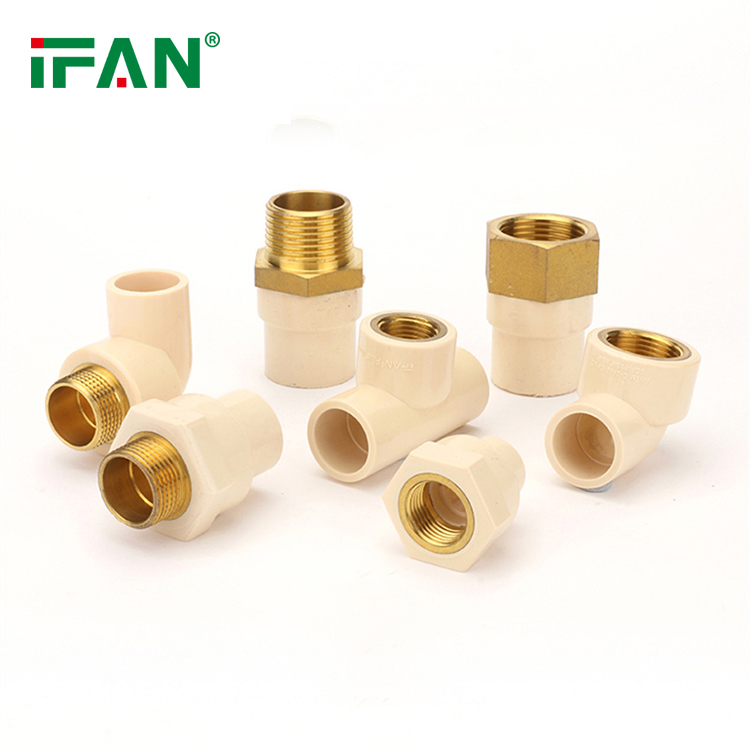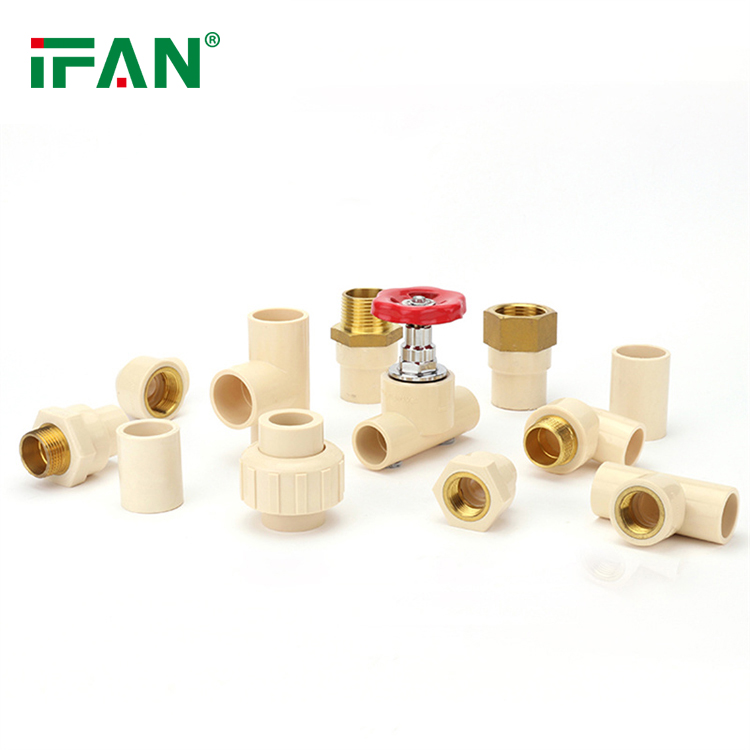IFAN factory 30+ years manufacture experience support color /size customization support free sample.Welcome to consult for catalog and free samples.This is our Facebook Website:www.facebook.com,Click to watch IFAN’s product video.Compared with Tomex products, our IFAN products from quality to price are your best choice, welcome to buy!
Introduction
CPVC (Chlorinated Polyvinyl Chloride) fittings are widely used in plumbing systems due to their durability and ease of installation. However, one critical aspect that must be managed is the expansion and contraction of CPVC fittings, which can occur due to temperature fluctuations. Understanding these effects and implementing effective mitigation strategies are crucial for ensuring the long-term performance and reliability of CPVC plumbing installations.
Thermal Expansion and Contraction Mechanism
CPVC fittings expand and contract primarily in response to temperature changes within the plumbing system. When exposed to higher temperatures, CPVC materials expand linearly, increasing their dimensions. Conversely, lower temperatures cause contraction, reducing the dimensions of CPVC fittings. This thermal movement can exert stress on joints, potentially compromising their integrity over time if not properly addressed.

Impact on System Integrity
The expansion and contraction of CPVC fittings can impact the overall integrity of plumbing systems. Excessive thermal movement may lead to loosening of joints, leaks, or even structural failure if the fittings are not adequately supported or if the system design does not account for temperature variations. Such issues can result in costly repairs, downtime, and potential damage to property or infrastructure.
Mitigation Strategies
Effective mitigation strategies are essential to manage CPVC fitting expansion and contraction and maintain system reliability:
- Proper Installation Techniques: Ensuring CPVC fittings are installed according to manufacturer guidelines is crucial. Proper solvent cement application and joint assembly techniques help minimize stress concentrations and ensure robust bonding, reducing the likelihood of joint failure due to thermal movement.
- Expansion Loops and Flexible Couplings: Incorporating expansion loops in CPVC piping systems allows for controlled movement of the pipe and fittings during temperature changes. Flexible couplings or expansion joints can also absorb thermal expansion and contraction, relieving stress on rigid connections and minimizing the risk of damage.
- Support and Anchoring: Adequate support and anchoring of CPVC pipes and fittings are essential to prevent excessive movement. Properly securing pipes at intervals specified by installation standards helps distribute thermal forces evenly and prevents unintended stress on joints.
- Temperature Considerations: Designing plumbing systems with temperature considerations in mind can mitigate the effects of thermal expansion and contraction. Proper insulation around pipes exposed to extreme temperatures helps stabilize the environment and reduce thermal fluctuations that can affect CPVC fittings.
- Material Selection and Testing: Choosing CPVC fittings with appropriate thermal expansion coefficients and conducting rigorous testing ensures compatibility with expected temperature variations in the application environment. Quality assurance measures during manufacturing and installation further mitigate risks associated with thermal movement.
Long-Term Maintenance and Monitoring
Regular maintenance and monitoring are essential components of managing CPVC fitting expansion and contraction:
- Inspection Protocols: Implementing routine inspections to assess the condition of CPVC fittings and joints helps identify early signs of stress or deterioration. Addressing potential issues promptly through maintenance activities such as re-anchoring or reinforcing supports can prevent costly repairs and system downtime.
- Performance Monitoring: Monitoring the performance of CPVC plumbing systems over time provides valuable data on the effectiveness of mitigation strategies. Continuous evaluation of temperature profiles and system pressures helps validate design assumptions and refine maintenance practices for optimal long-term reliability.
Conclusion
In conclusion, understanding the effects of CPVC fitting expansion and contraction is essential for maintaining the performance and integrity of plumbing systems. By implementing effective mitigation strategies such as proper installation techniques, incorporating expansion loops, and selecting suitable materials, stakeholders can minimize the risks associated with thermal movement. Long-term maintenance practices and performance monitoring further support sustainable operation and mitigate potential challenges associated with CPVC fitting thermal dynamics. By proactively addressing these considerations, plumbing professionals and building owners can ensure durable and reliable CPVC installations that meet the demands of diverse applications and environmental conditions.

This overview provides a comprehensive perspective on managing CPVC fitting expansion and contraction, emphasizing proactive strategies to enhance system durability and operational efficiency in plumbing applications.





